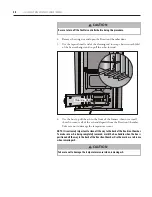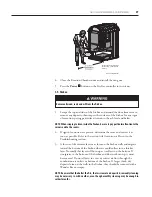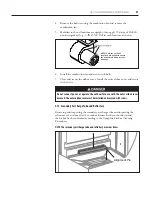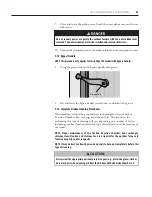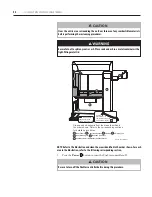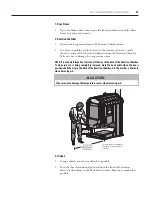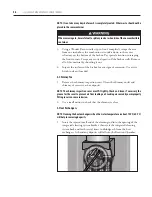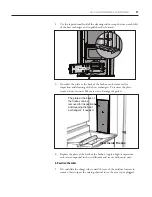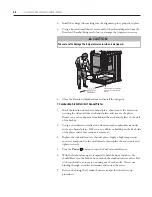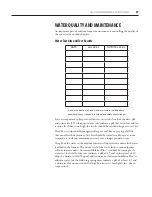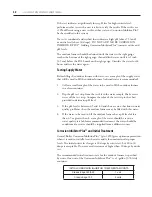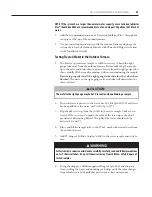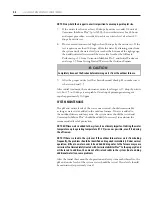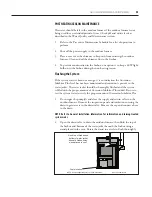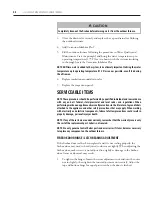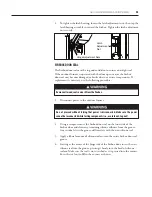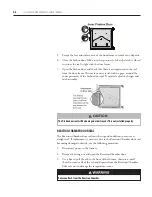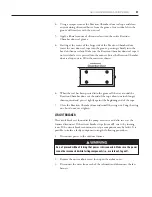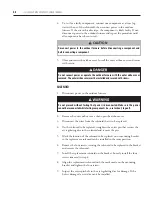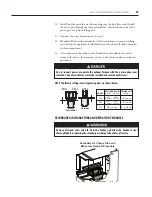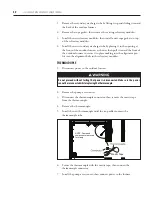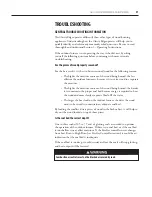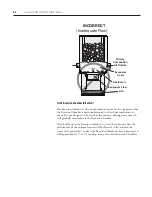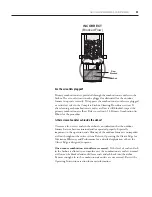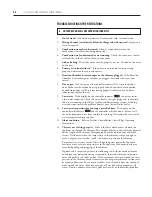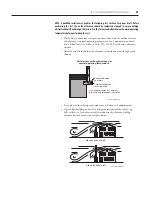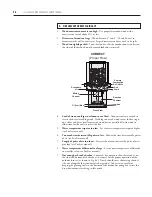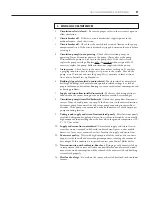
42
CLASSIC EDGE OUTDOOR FURNACE • OWNER'S MANUAL
NOTE: Always hold the dropper in a vertical position to ensure proper droplet size.
7. If the nitrite level is not at least 20 drops by nitrite test, add 1/4 unit of
Corrosion Inhibitor Plus™ (p/n 1650); then circulate water for 24 hours
and repeat procedure, as needed, to achieve a nitrite level of at least 20
drops by nitrite test.
8. Do not exceed treatment of higher than 30 drops by the nitrite test. If the
test requires more than 30 drops, dilute the water by draining water from
the system until the water level just reaches the bottom of the sight gauge;
then add untreated water until the water level reaches the full mark.
Perform steps 2-3 from Corrosion Inhibitor Plus™ and Initial Treatment
and steps 1-9 from Testing Treated Water in the Outdoor Furnace.
CAUTION
Completely clean out the firebox before draining water from the outdoor furnace.
9. After the proper nitrite level has been obtained, check pH to make sure it
is between 8 and 9.5.
After initial treatment, the maintenance nitrite level target is 15 drops by nitrite
test, but 15 to 30 drops is acceptable. One drop of permanganate reagent
equals approximately 100 ppm.
SYSTEM MAINTENANCE
The pH and nitrite levels of the water, once treated, should remain stable
as long as water is not added to the outdoor furnace. If water is added to
the outdoor furnace and/or system, the system water should be tested and
Corrosion Inhibitor Plus™ should be added (if necessary) to maintain the
recommended level of protection.
NOTE: ANY time water is added to the system, it is extremely important to bring the water
temperature up to operating temperature (175˚F) as soon as possible, even if it is during
the off-season.
NOTE: If there is a leak in the system or if the outdoor furnace loses water from boiling
frequently, the problem should be identified and repaired immediately. Under normal
operation, little or no water needs to be added. Adding water to the furnace may cause
corrosion if not immediately treated with Corrosion Inhibitor Plus™ to the proper pH and
nitrite levels. In addition, the amount of dissolved solids in the system (due to adding
additional water) can cause problems.
After the initial three months of operation and every six months thereafter, the
pH and nitrite levels of the system water should be tested. These levels should
be maintained as previously stated.

